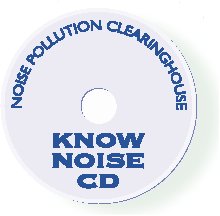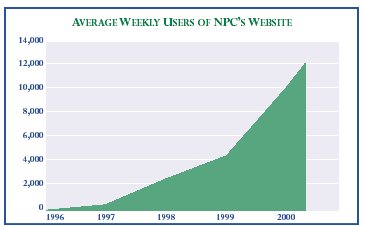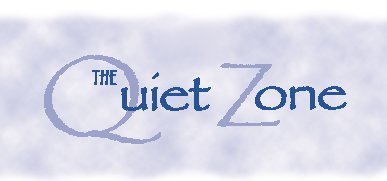
Narrowing the list of noises we can do without to twenty is nearly
impossible. There are just too many candidates. Nevertheless, here is
the Noise Pollution Clearinghouse's list. Like litter on the landscape,
these noises pollute our soundscape. But to make it into Nap's top
twenty requires something extra: a complete disregard for neighbors, a
huge profit at the expense of others, a noise as pointless as a fire
alarm in hell, or a noise with a solution as simple as a muffler. These
are all noises we can do without.
RACE TRACKS: Heard more than
five miles away, their noise is impossible for neighbors to escape,
and could be eliminated with technology as old as the automobile: the
muffler.
CAR ALARMS: These devices
shriek, "Go steal someone else's car." They serve no social
purpose. They don't reduce crime; they don't catch criminals; they
only tell the thief to steal the next car. Police don't receive tips
on car thieves because of car alarms, only complaints about the noise
from false alarms.
VOLUNTEER FIRE DEPARTMENT SIRENS:
Not to be confused with the sirens on the trucks (although they are
annoying too), these large stationary sirens were once used to call
volunteer firemen to the station to respond to a fire. With modern
telecommunications technology, pagers, and radios that can direct
emergency personnel right to the fire, these sirens are now used to
announce to the community that the fire department is again rushing
into a burning building - something the local paper will headline the
next day.
MOTORCYCLES WITHOUT MUFFLERS:
Heard on every road, illegal in every state, this problem is the
complement of fire siren noise. Instead of an ear-piercing noise
served up by the local emergency service, this noise results when the
police don't enforce existing laws.
TRUCKS: Even without the noise,
our nation's reliance on big trucks is ridiculous. Big rigs are
inefficient, polluting, involved in a disproportionate number of fatal
accidents, and cause most of the damage to roads. To add insult to
injury, they would be half as loud if the United States would only
adopt European noise standards.
GARBAGE TRUCKS: Twenty years
ago, the EPA was going to require quieter garbage trucks. Eventually
the government was going to quiet hundreds of other products too. It
would be a much quieter place today if it weren't for trash haulers'
underworld influence and Ronald Reagan's dislike for all things
environmental. As a result of their combined efforts, the EPA's noise
office was closed in 1981, and measures to quiet garbage trucks and
other products ended up in the trash.
TRAIN HORNS: The train horn is a
romantic sound, unless you live near the tracks. Then it's totally
unnecessary, and so is the lost sleep. Warning cars of approaching
trains doesn't require 100 plus decibels; crossing gates with flashing
lights work just fine.
NIGHT FLIGHTS: For thousands of
people living near airports, a quiet night's sleep is only a dream.
Air cargo (which has grown 2,400% since 1960) and redeye flights cause
redeye for thousands of airport neighbors. Sending overnight mail or
flying on a plane that takes off or lands between 10 PM and 7 AM is
like driving through residential neighborhoods at night honking the
horn. It should be something that no civilized and civil human
inflicts on another.
AIR TOURISM OVER NATIONAL PARKS:
Pristine wilderness with an urban soundscape! Not exactly what you
look for in a National Park. Yet the FAA insists that the Park ends
where the birds begin, that pilots and sightseers, who don't even pay
an entrance fee, are free to buzz our national treasures.
JET SKIS: Lakes and rivers
already have enough mosquitoes.
LEAF BLOWERS: Good technology
improves our quality of life by allowing us to do things better or
more efficiently. The leaf blower is bad technology. It spews noise
and air pollution from a dirty two-cycle engine in order to blow
leaves and dirt into the air. The leaf blower doesn't pick up a single
leaf, but its noise damages the hearing of the operator and the peace
of the neighborhood, while the particulate pollution blown into the
air first aggravates allergies and irritates lungs, and then settles
down on sidewalks and driveways, waiting to be blown back into the air
again.
GUN RANGES: Where do you site a
facility designed to scatter lead and noise throughout the
environment? Okay, that was a trick question. How about this one: What
does the NRA seek for gun ranges that cannot meet community noise
standards? Exemptions from regulation.
COMMERCIAL AIR-CONDITIONERS:
When it is unbearably hot, they make the owner's building more
comfortable. Too often, however, they make life for neighbors
unbearable, cycling on and off, causing a distracting racket during
the day and waking up neighbors at night. These big rooftop units on
large buildings (and sometimes the smaller window and central
air-conditioners), when improperly designed and inappropriately sited,
are the ultimate bad-neighbor machine, making the owner more
comfortable at his neighbors discomfort.
LOUD CHILDREN'S TOYS: Let's
produce and market a toy that damages children's hearing. It could
only happen in America, where the maximum noise limit is 140 decibels.
Why not just park the kids in front of a 110-decibel rock concert
speaker? It's quieter.
BOOM CARS: "DISTURB the
peace." That's Sony Corporation's trademark, used to market
incivility along with their line of car stereos that offer "all-new
ways to OFFEND." These rock concerts on wheels are unsafe to
people both inside and out of the vehicle. If you can hear the car
coming from a block away, you can be sure that the driver won't hear a
police, fire, or ambulance siren. Nor will he hear anything in a
couple of years.
NIGHT CLUBS AND CONCERTS: We
know loud concerts harm hearing. Rock musicians who have hearing loss
have even formed an organization to encourage other musicians to use
earplugs. If instead, they turned it down a few decibels, they and
their fans could still enjoy the music in 40 years.
MOVIE TRAILERS: These are ads
for a movie that come before the feature, played at levels sufficient
to damage your hearing, all in order to convince you to go to another
movie that will also damage your hearing.
CONSTANTLY BARKING DOGS: Why
does a dog, left alone chained to a tree, bark incessantly? Why does a
dog owner, someone who cares about this animal, if not his neighbors,
leave it chained and barking? Bring it in.
CELL PHONES IN PUBLIC PLACES:
Courtrooms, classrooms, concert halls, theaters, as well as trains and
restaurants - when did we stop teaching manners?
NIGHTTIME CHURCH BELLS: Speaking
of manners, these are the people who are supposed to treat their
neighbors as they would like to be treated. Yet in neighbors' houses,
church bells are as loud as an alarm clock, and ring every hour..

DEDICATION
On February
13, 2001 two police officers responding to a noise complaint in a
Centreville, Maryland trailer park were shot and killed by a
resident who neighbors claimed was playing a stereo too loud.
Officer Jason Schwenz, 28, died at the scene. Officer Michael
Nickerson, 24, died an hour after the shooting while undergoing
emergency surgery.
By choosing to quiet their
surroundings, the assailant's neighbors called the police for help
and in doing so a tragedy was played out that left two innocent men
dead. This premier issue of The Quiet Zone is dedicated to these two
men whose lives were stolen as they tried to keep the peace.
|

You Can't Buy
Quiet...
One of the main reasons for the public's
growing awareness of noise, as a community and environmental
problem, is that more and more people are realizing that you can no
longer buy quiet.  Fifty
years ago, anyone with means who wanted quiet could flee noisy
cities for quieter suburbs. But those undertaking the urban exodus
didn't leave the urban soundscape behind; they took the noise with
them. Larger suburban lawns meant larger lawnmowers, and spurred a
host of noisy inventions such as the weed wacker and the leaf
blower. Noisy highways were built in the peaceful suburbs and
countryside to zip workers back to the city. And airport expansion
made anyone within 30 miles of an airport one flight path change
away from aggravating days and sleepless nights. Fifty
years ago, anyone with means who wanted quiet could flee noisy
cities for quieter suburbs. But those undertaking the urban exodus
didn't leave the urban soundscape behind; they took the noise with
them. Larger suburban lawns meant larger lawnmowers, and spurred a
host of noisy inventions such as the weed wacker and the leaf
blower. Noisy highways were built in the peaceful suburbs and
countryside to zip workers back to the city. And airport expansion
made anyone within 30 miles of an airport one flight path change
away from aggravating days and sleepless nights. |
...But
You Can Contribute to a Quieter World
What's changed in the last fifty years is that for the vast
majority of citizens, a quiet environment can no longer be
purchased; creating a quiet environment has become a community
effort, a political and educational undertaking. That's how NPC
contributes. NPC is the only grassroots organization dedicated
solely to creating more livable cities and more natural rural and
wilderness areas by reducing noise. We are leading and organizing
the effort to quiet the cacophony of modern life. You can join us;
we need your contribution. Last year we raised $165,000. That's
about the cost of one ad in Sony Corporation's "DISTURB the
peace"™ campaign: designed to market incivility and very
loud car stereo systems that offer "all new ways to offend."
Although we may never have a budget like that of the noise
polluters, with your help we can raise enough money to take them on.
You can help to make it a fair fight. If you are able to help, use
the return envelope to contribute to the Noise Pollution
Clearinghouse. |

"Noise speaks danger; it both threatens
and invites aggression.
It triggers the physiological chemistry of the ‘fight-or-flight'
response.
Before we were even human, noise signaled the approach of the
carnivore, of lightning and lava.
More recently, it became the alarm of invasion, first of the
barbarian outside the gates
and increasingly of the barbarian within. The audio-terrorist
turns into decibels
the dynamics of every relationship based on unrequited power:
My noise can penetrate your quiet, but your quiet can never
penetrate my noise."
Garret Keizer, Harper's, March
2001
| For the first time in as long
as we can remember, the national media are covering NOISE and QUIET,
not just the conflicts that surround efforts to quiet specific
noises. Two recent articles in major magazines and recent National
Public Radio coverage mark an important change in the way noise is
covered by the press and seen by the public. In the March issue of
Smithsonian magazine, NPC was featured in an article aptly
entitled "Noise Busters" by Richard and Joyce Wolkomir.
The Wolkomirs visited NPC's office and followed Director Les
Blomberg for three weeks in 2000-while we answered e-mails and
questions, hosted a gun range noise conference, recorded a racetrack
for the Know Noise CD (see accompanying article), studied aviation
noise, and met with New York City anti-noise activists. The March
issue of Harper's magazine (not to be confused |
with Harper's Bazaar
which coincidentally will also have an article on noise pollution in
an upcoming issue) also contains a wonderfully lyrical article
entitled "Sound and Fury: The Politics of Noise in a Loud
Society." The article by Garret Keizer features several groups
and individuals that have worked with NPC to reduce noise pollution.
If you haven't seen these articles, we hope you'll visit one of our
favorite sanctuaries from the din, your local library. And while
you're there, make a copy for a friend. After your trip to the
library, if you are still interested in national media attention,
check out the archives of National Public Radio's Diane Rehm Show
from Tuesday April 24th. Les Blomberg was a guest on the one-hour
interview and call-in program. The show can be heard on the web
using a RealAudio player at:
this link |
 |

Fighting Noise Polluters with Their Own Noise
Activists Defeat Racetrack with
NPC's Know Noise CD
The following is an excerpt from a letter we
received about one community's effort to preserve its peace and
quiet. They used NPC's Know Noise CD to score a great public
relations victory. The CD is intended to allow citizens, city
councils, planning commissions, etc. to hear the noises they
discuss, permit, or regulate. The Know Noise CD, a sound system,
and a sound level meter allow the existing or proposed noise
levels to be reproduced. Often you don't need an expert to know
that a noise is disturbing, just your ears. Against the odds, this
group got their message heard.
As our group battled the
construction of a racetrack, we quickly discovered that Montana
lacks substantial zoning restrictions, a noise ordinance and a
growth plan. There were no meetings with County Commissioners
(they refused to be a part of it), but there was one public
meeting held by the Motorsports Association who planned to build
the track. Notice of the meeting was published in the paper one
day before the actual meeting, but we quickly organized ourselves
and turned out a large showing.
Each person entering the door
was handed a paper that read, in part, "There is nothing you
can do to stop the racetrack. It is going to happen." This
statement motivated some citizens who had been previously
uninvolved. 
One member of our group
volunteered her heavy duty sound system, and rented a generator to
power it. On the day of the meeting, she set up the system in the
parking lot outside of the meeting location. She started playing
the recording of racetrack noise from the Noise Pollution
Clearinghouse's Know Noise CD before the meeting started.
With the help of your staff,
we determined the proper decibel level for playback. It drew a
great amount of attention. One woman who lived one mile away said
she hadn't heard about the meeting, but had come simply to find
out what the noise was.
The Motorsports group
unplugged the sound system once, but when one of our supporters
plugged it in again the Motorsports group would not start their
meeting (it was difficult to hear, even inside). Finally, the
police were called and the system was turned off, but our point
was well made.
We battled the Motorsports
group for over a year after that meeting. With the help of several
attorneys, they were eventually defeated.
Our many thanks to NPC for
your invaluable advice, the information we found on your website,
the noise recording, and your willingness to help in many ways.
NPC will be adding to its CD library of noises as funding
allows. This year we hope to record examples of the Twenty Noises
We Can Do Without (see first article).

Noise is unwanted sound. The derivation of the word "noise"
says it all - it comes from the Latin word "nausea,"
meaning "seasickness." As its name suggests, noise has
many unpleasant and harmful effects. It can cause hearing loss,
stress, high blood pressure, sleep loss, lost productivity, and a
general reduction in the quality of life and opportunity for
personal and collective tranquility. In the words of former U.S.
Surgeon General William H. Stewart, "Calling noise a nuisance
is like calling smog an inconvenience. Noise must be considered a
hazard to the health of people everywhere."
 Noise
is among the most pervasive pollutants today, and the problem is
getting worse. In pre-industrial times, the loudest noise was
thunder. Today, however, we are continually exposed to louder and
more frequent sounds. Noise from automobiles, aircraft,
construction equipment, manufacturing processes, lawn mowers, and
boom boxes-to name just a few sources-are among the unwanted
sounds that are routinely broadcast into the air. And new sources
of noise constantly present themselves. Leafblowers and jet skis
are just two examples of noise sources that did not exist until
very recently. Noise
is among the most pervasive pollutants today, and the problem is
getting worse. In pre-industrial times, the loudest noise was
thunder. Today, however, we are continually exposed to louder and
more frequent sounds. Noise from automobiles, aircraft,
construction equipment, manufacturing processes, lawn mowers, and
boom boxes-to name just a few sources-are among the unwanted
sounds that are routinely broadcast into the air. And new sources
of noise constantly present themselves. Leafblowers and jet skis
are just two examples of noise sources that did not exist until
very recently.
But the presence of noise in
our natural, rural, and urban environments is not just a
nuisance-it's a health hazard.
For example:
- Noise is a biological stressor that has negative effects on
the entire physiological system, contributing to elevated blood
pressure, and changes in blood chemistry.
- Noise is the leading cause of hearing loss, and for the 28
million Americans who have hearing problems, noise makes
communication even more difficult and frustrating. Moreover,
much of the hearing loss that people associate with aging is
actually caused by noise exposure.
- Noise causes sleep disturbances, which cause a host of
problems, including reduced job performance, mood changes, and
increased risk of automobile accidents.
- Noise negatively affects one's ability to learn and
concentrate. Studies have shown decreased reading ability and
scholastic performance of school children exposed to noise.
Another researcher recently found that noisy classrooms
encourage children to tune out not only extraneous noises, but
also the teacher, leading to attentional and/or behavioral
problems. Studies of adults show poorer performance of complex
tasks in noisy environments.
- Noise renders us less tolerant of frustration and numb to the
needs of other people, further reducing our quality of life and
the civility of society.
For more information on the health effects of noise, check
out the NPC website!
In NPC's Online Library you will find these excellent resources
on noise and health:
- "NOISE
AND ITS EFFECTS" (Suter, 1991). This
report, written by a leading noise expert, provides a
comprehensive overview of the noise problem.
- "NOISE
EFFECTS HANDBOOK: A DESK REFERENCE TO HEALTH AND WELFARE
EFFECTS OF NOISE" (EPA, 1981). This
handbook, from the EPA's Office of Noise Abatement and Control
(now defunct), details the effects noise has on communication,
sleep, and the community.
- "COMMUNITY
NOISE" (WHO, 1995). Published by the World
Health Organization, this is the most up to date overview of the
effects of community noise.
|

The Internet's Source for No Noise Information!
(http://www.nonoise.org)
NPC's website is one of the most important resources we have to
offer persons with noise problems. The website provides valuable,
sophisticated, and professional resources to individuals and groups
who usually do not have access to such information. Growing numbers of
citizens are discovering the NPC website as they work toward creating
a quieter, more livable society.
The six main features of the website are:
- NPC's Online
Library which contains scientific reports, papers, fact
sheets, etc., on important noise related topics;
- NPC's Law Library
which contains relevant national, state, and local laws and
legislation regarding noise pollution;
- NPC's Noise News
which features summaries of articles concerning noise pollution that
appear in major newspapers and journals throughout the nation and
world;
- NPC's Resource
Page which contains resources for teachers, students,
journalists, and activists;
- NPC's Quietnet
which is a collection of websites that the Noise Pollution
Clearinghouse hosts for smaller noise groups;
- NPC's Hearing Loss
and Occupational Noise Library, our most recent feature, which
is geared at reducing hearing loss.
The latest major additions to our Online Library include:
Check it out! |
 .
.

 Fifty
years ago, anyone with means who wanted quiet could flee noisy
cities for quieter suburbs. But those undertaking the urban exodus
didn't leave the urban soundscape behind; they took the noise with
them. Larger suburban lawns meant larger lawnmowers, and spurred a
host of noisy inventions such as the weed wacker and the leaf
blower. Noisy highways were built in the peaceful suburbs and
countryside to zip workers back to the city. And airport expansion
made anyone within 30 miles of an airport one flight path change
away from aggravating days and sleepless nights.
Fifty
years ago, anyone with means who wanted quiet could flee noisy
cities for quieter suburbs. But those undertaking the urban exodus
didn't leave the urban soundscape behind; they took the noise with
them. Larger suburban lawns meant larger lawnmowers, and spurred a
host of noisy inventions such as the weed wacker and the leaf
blower. Noisy highways were built in the peaceful suburbs and
countryside to zip workers back to the city. And airport expansion
made anyone within 30 miles of an airport one flight path change
away from aggravating days and sleepless nights. 



 Noise
is among the most pervasive pollutants today, and the problem is
getting worse. In pre-industrial times, the loudest noise was
thunder. Today, however, we are continually exposed to louder and
more frequent sounds. Noise from automobiles, aircraft,
construction equipment, manufacturing processes, lawn mowers, and
boom boxes-to name just a few sources-are among the unwanted
sounds that are routinely broadcast into the air. And new sources
of noise constantly present themselves. Leafblowers and jet skis
are just two examples of noise sources that did not exist until
very recently.
Noise
is among the most pervasive pollutants today, and the problem is
getting worse. In pre-industrial times, the loudest noise was
thunder. Today, however, we are continually exposed to louder and
more frequent sounds. Noise from automobiles, aircraft,
construction equipment, manufacturing processes, lawn mowers, and
boom boxes-to name just a few sources-are among the unwanted
sounds that are routinely broadcast into the air. And new sources
of noise constantly present themselves. Leafblowers and jet skis
are just two examples of noise sources that did not exist until
very recently.
